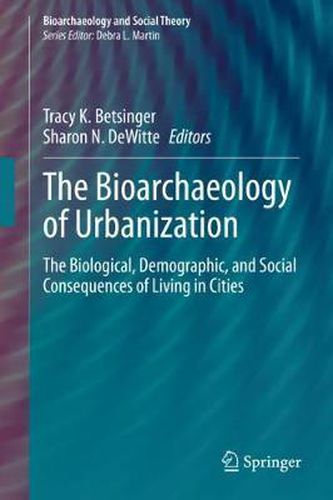Readings Newsletter
Become a Readings Member to make your shopping experience even easier.
Sign in or sign up for free!
You’re not far away from qualifying for FREE standard shipping within Australia
You’ve qualified for FREE standard shipping within Australia
The cart is loading…






Urbanization has long been a focus of bioarchaeological research, but what is missing from the literature is an exploration of the geographic and temporal range of human biological, demographic, and sociocultural responses to this major shift in settlement pattern. Urbanization is characterized by increased population size and density, and is frequently assumed to produce negative biological effects. However, the relationship between urbanization and human health requires careful examination given the heterogeneity that exists within and between urban contexts. Studies of contemporary urbanization have found both positive and negative outcomes, which likely have parallels in past human societies.
This volume is unique as there is no current bioarchaeological book addressing urbanization, despite various studies of urbanization having been conducted. Collectively, this volume provides a more holistic understanding of the relationships between urbanization and various aspects of human population health. The insight gained from this volume will provide not only a better understanding of urbanization in our past, but it will also have potential implications for those studying urbanization in contemporary communities.
$9.00 standard shipping within Australia
FREE standard shipping within Australia for orders over $100.00
Express & International shipping calculated at checkout
Urbanization has long been a focus of bioarchaeological research, but what is missing from the literature is an exploration of the geographic and temporal range of human biological, demographic, and sociocultural responses to this major shift in settlement pattern. Urbanization is characterized by increased population size and density, and is frequently assumed to produce negative biological effects. However, the relationship between urbanization and human health requires careful examination given the heterogeneity that exists within and between urban contexts. Studies of contemporary urbanization have found both positive and negative outcomes, which likely have parallels in past human societies.
This volume is unique as there is no current bioarchaeological book addressing urbanization, despite various studies of urbanization having been conducted. Collectively, this volume provides a more holistic understanding of the relationships between urbanization and various aspects of human population health. The insight gained from this volume will provide not only a better understanding of urbanization in our past, but it will also have potential implications for those studying urbanization in contemporary communities.